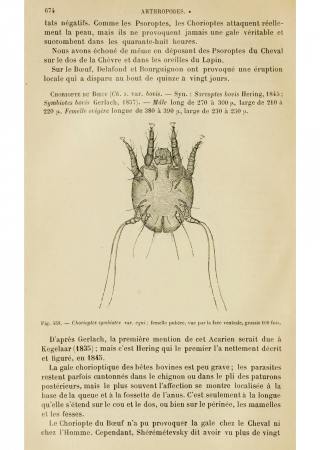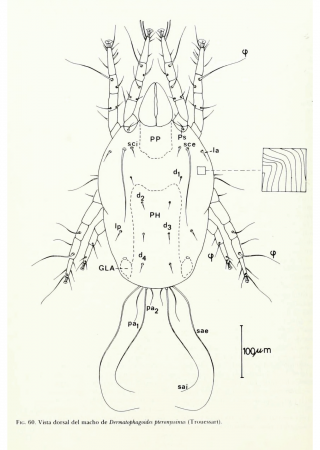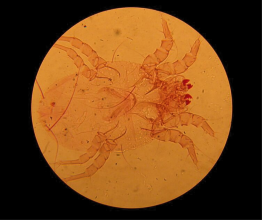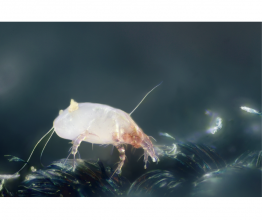House Dust Mite
Dermatophagoides pteronyssinus
Did you know that… ?
- …mites are relatives of spiders and scorpions?
-
…the name Dermatophagoides comes from Greek and means literally 'skin eater'?
-
…one mattress can harbor up to ten million mites?
-
…the greatest number of dust mites in homes occurs between August and October, when there may be up to ten times the number found in spring?
-
…there are roughly 100 times more dust mites in a bed than there are in other parts of the house?
-
…the number of dust mites may be reduced by using special bedding, frequent laundering of bedding and reducing humidity in the home?
General info
Phylum: Arthropoda
Class: Arachnida
Order: Acari
Size: 0.3 mm
Food: organic detritus
Habitat: mostly bedrooms
Distribution: cosmopolitan
Relationship with humans: pest
Biology
This species is one of many mites species found in human dwellings. Dust mites are found primarily in carpets, mattresses, pillows and bedcovers, where they consume organic detritus such as human skin flakes. The development cycle of these mites lasts around 25 days; sexual maturity is reached in about three days. A female can lay up to 100 eggs during her life. Dust mites are unpleasant cohabitants of human dwellings, since their excrement and shed exoskeletons often cause allergic reactions in people. This usually consists of itchy skin, clogged nose, sneezing and irritated eyes.





